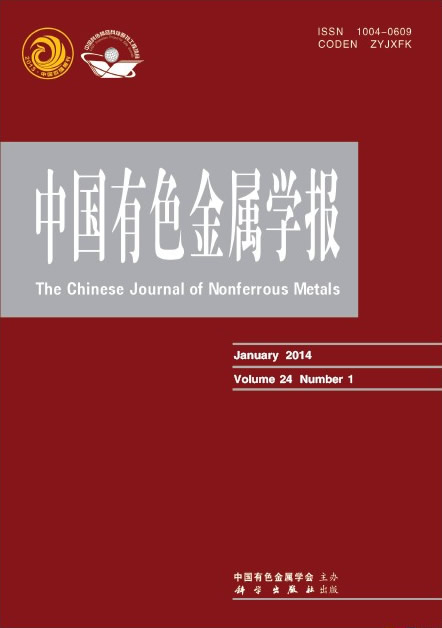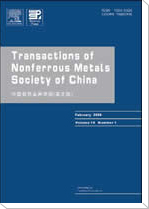(1. 北京科技大学 材料先进制备技术教育部重点实验室,北京 100083;
2. 北京科技大学 新材料技术研究院,北京 100083)
摘 要: 研究退火温度对连铸-轧制成形铜包铝复合扁排组织、界面结构与结合强度、力学性能以及电学性能的影响。结果表明:铜包覆层在300 ℃开始再结晶,400 ℃时再结晶完成;芯部铝靠近铜包覆层的剧烈变形区在200 ℃完成再结晶;而在中心部位,粗晶区在250 ℃时已开始再结晶,400 ℃时再结晶完成。铜包铝复合扁排的抗拉强度和伸长率在300 ℃以下退火时变化较小,在300 ℃以上退火时变化显著。随着退火温度的增加,界面结合强度先增大后减少。在250 ℃及以下温度退火时,界面处无明显金属间化合物相生成,因此,在此温度范围内,界面结合强度随着退火温度的升高而升高;退火温度在300~400 ℃时,界面处有金属间化合物相生成,且随温度升高,界面厚度由约1 μm增大到约4 μm,界面结合强度由54.0 MPa逐渐降低到25.8 MPa。铜包铝复合扁排的电阻率主要受基体金属组织状态的影响,随着退火温度的升高,铜包铝扁排的电阻率逐渐降低;在本实验条件下,当界面处金属间化合物层的厚度不大于4 μm时,金属间化合物层对电阻率的影响不明显。
关键字: 连铸-轧制法;铜包铝扁排;退火;界面;性能
(1. Key Laboratory for Advanced Materials Processing, Ministry of Education,
University of Science and Technology Beijing, Beijing 100083, China;
2. Institute for Advanced Materials and Technology, University of Science and Technology Beijing, Beijing 100083, China)
Abstract:The copper cladding aluminum (CCA) flat bar was fabricated by continuous casting-rolling technology, and then, the effects of annealing temperature on the texture, interface structure and bonding strength, mechanical and electrical properties of CCA flat bar were investigated. The results show that the recrystallization of the copper sheath starts at 300 ℃, and completes at 400 ℃. The aluminum along the copper sheath is in the severe deformation zone, and the recrystallization almost completes at 200 ℃. However, the recrystallization of aluminum core in the coarse grain zone starts at 250 ℃, and completes at 400 ℃. The variations of tensile strength and elongation are small when the annealing temperature is below 300 ℃, but becomes large above 300 ℃. The interface bonding strength ascends, and then descends as the annealing temperature rising. When the annealing temperature is not higher than 250 ℃, there is no intermetallic phase generates at the interface, because of which the bonding strength ascends at this temperature range. However, when the annealing temperature is 300-400 ℃, the intermetallic phase forms at the interface, the interface layer thickness increases from about 1 μm to 4 μm, the bonding strength descends from 54.0 MPa to 25.8 MPa. The electrical resistivity is influenced mainly by the microstructures of the component metals. The electrical resistivity of the CCA flat bar descends as the annealing temperature rising. Under the experimental conditions, the interface layer at the interface is less than 4 μm, which has little influence on the electrical resistivity of the CCA flat bar.
Key words: continuous casting-rolling method; copper cladding aluminum flat bar; annealing; interface; property


